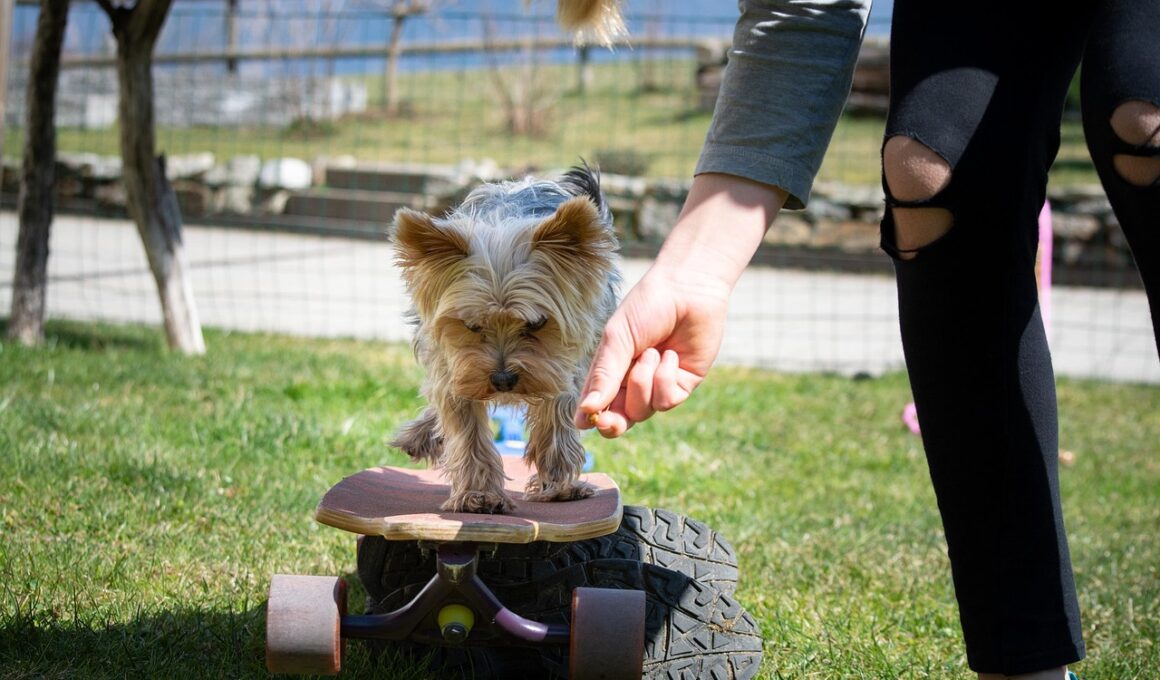Beginner’s Guide to Dog Training Obedience Kits
Dog training obedience kits are essential for anyone wanting to instill positive behavior in their canine companions. These kits come with an array of tools that can streamline training, making the process enjoyable for both the dog and the trainer. Some common components of these kits include clickers, leashes, harnesses, and treats. The clicker is particularly effective as it provides immediate feedback to the dog. Additionally, many of these kits include access to training guides, which can be of great help for both beginner and experienced dog owners. Selecting the right kit is crucial, as different breeds and temperaments respond differently to various training methods. Researching the specific needs of your dog should be done before you make a purchase. Furthermore, investing in a high-quality set of tools ensures durability and can lead to better training outcomes. It’s also worth considering training classes that are often bundled with these kits, as they can provide valuable hands-on instruction and support. Ultimately, the right dog training obedience kit can significantly enhance your training journey, helping you build a stronger bond with your pet.
Understanding how to effectively use a dog training obedience kit is key to its success. Not all dogs learn the same way, so patience and consistency are necessary. Begin your training in a distraction-free environment, which allows your dog to focus on the commands being learned. Most dog training kits will include basic commands like “sit,” “stay,” and “come.” Start with one command at a time and gradually build on those skills. Frequent short training sessions are more effective than long, exhausting ones. Aim for consistency in your commands and rewards so your dog understands what is expected. Consistency helps your dog form a clear association between behaviors and rewards, which can be an effective motivator. As your dog begins to master commands, slowly introduce distractions to simulate real-world scenarios. Consistent practice aids reinforcement and builds a positive attitude towards training. Remember, positive reinforcement is vital; always reward your dog with praise or treats for successfully completing a task. This encouragement fosters a trusting relationship and makes training a delightful experience for both of you.
Essential Components of Dog Training Obedience Kits
When selecting a dog training obedience kit, it’s vital to understand what components are necessary and how each contributes to effective training. Firstly, a good leash is essential; it offers control during training sessions. Look for leashes that are durable yet comfortable to hold. Next, harnesses or training collars, like gentle leaders, can help guide the dog without causing harm. Many kits also feature clicker training tools, which enhance communication between you and your dog. Clickers signal to the dog that they have performed the correct behavior and are often used in conjunction with positive reinforcement. Treats are another indispensable element, providing motivation and rewards for your dog’s progress. Choose treats that are easy to manage and don’t distract the dog too much from focusing on their training. Additionally, some kits come with training manuals or online access to resources, which can be incredibly useful for new dog owners. Ultimately, ensuring a well-rounded kit can contribute significantly to the training experience and outcome.
Each dog has its unique personality and learning style, and this necessitates a tailored approach to training. For instance, some dogs may respond better to verbal commands, while others might require visual cues to understand what is being asked of them. Therefore, exploring the components of your dog training obedience kit while assessing your dog’s behavior can significantly improve the effectiveness of your sessions. Volume and tone when giving commands are also crucial; a positive, inviting tone encourages your dog for better results. Consistency extends beyond the words you use; your body language also plays a pivotal role. Dogs are highly attuned to non-verbal cues, so displaying calm and confident body language can help your dog understand what is expected in a given moment. Mixing up your training sessions by introducing new commands or tricks keeps the training engaging and mentally stimulating for your dog. Additionally, remember that every dog deserves to learn at their own pace, incorporating ample breaks to avoid frustration or burnout helps maintain enthusiasm throughout the process.
The Importance of Socialization in Dog Training
Socialization is a critical aspect of dog training that often goes overlooked. While obedience kits primarily focus on command training, exposing your dog to various environments and situations is equally essential. Early socialization helps dogs develop a well-rounded temperament and prevents behavior issues down the line. Start by introducing your dog to different people, animals, and settings; this helps them acclimate to varied stimuli. Controlled encounters in the presence of friendly dogs can build confidence and improve social skills. Many dog training obedience kits come with suggestions for socialization activities and exercises to incorporate alongside obedience training. Learning to behave appropriately in different situations reinforces lessons taught at home. Rewarding your dog for positive interactions encourages them to engage more with the world. Always keep safety in mind; supervise interactions with unknown dogs and people until you’re confident in your dog’s behavior. A well-socialized dog not only behaves better but also enjoys a happier life. Inviting friends or family to participate can also enrich your dog’s experience, enhancing the bond between you and your pup.
Incorporating fun into your dog training sessions can yield exceptional results. Training doesn’t have to feel like a chore; using games and interactive toys can motivate and engage your dog, making learning enjoyable. Many dog training obedience kits include toys designed specifically to make training more fun and dynamic. For instance, using a toy to encourage a dog to ‘fetch’ can serve as a reward and a learning tool. Treat-dispensing toys can provide not only entertainment but also teach your dog patience and problem-solving skills. Engage in play to reinforce commands, such as asking your dog to sit before throwing a toy; this strengthens the learning connection. By keeping training playful, you can reduce stress for both you and your dog, leading to a more productive training session. As your dog achieves various milestones, celebrating those moments with enthusiasm hydrates their eagerness to learn. Additionally, a fun approach can be useful for overcoming behavioral challenges, turning frustrating moments into opportunities for bonding and cooperation. Ultimately, a blend of work and play fosters a well-trained and happy pet.
Maintaining Consistency and Patience
The journey of dog training is one that requires both consistency and patience. When utilizing a dog training obedience kit, it’s vital to establish a routine that promotes regular practice. Scheduling daily training sessions, whether brief or extended, allows for constant reinforcement of lessons learned. This consistent interaction encourages improved retention of commands and builds a solid foundation for future training. Additionally, acknowledging that each dog learns at their own pace can help mitigate frustrations. Set realistic expectations for your dog’s progress based on their age, breed, and temperament. Celebrate small victories, as they can motivate you and your dog to continue striving for success. Alongside regular training sessions, daily interactions at home can further reinforce obedience, such as rewarding your dog for waiting patiently or following basic commands. Balance is crucial; training should not become an overwhelming or tedious experience for either party involved. By maintaining a positive atmosphere, you’ll foster trust and communication. Ultimately, a balanced approach leads to lasting relationships and a well-trained dog.
As you embark on your journey with a dog training obedience kit, remember that the ultimate goal is a harmonious relationship with your canine companion. This relationship is built on trust, respect, and understanding. A well-trained dog will not only obey commands but will also feel secure in their environment, leading to a happier life for both owner and pet. As you navigate training challenges, consider the potential for customization in your methods. Each dog’s unique personality is conducive to different types of training techniques and rewards. Use the knowledge gained from your training kit, personal experience, and feedback from professional trainers to tailor your approach. Continuous learning will bolster an understanding of canine behavior and reinforce training efforts. As your skills evolve, share your insights and experiences with the dog training community, as mutual support and communication can yield fresh ideas and techniques. Ultimately, a dog training obedience kit serves as an invaluable resource; it is the bond formed through training that enhances the experiences of everyday life with your beloved pet.


